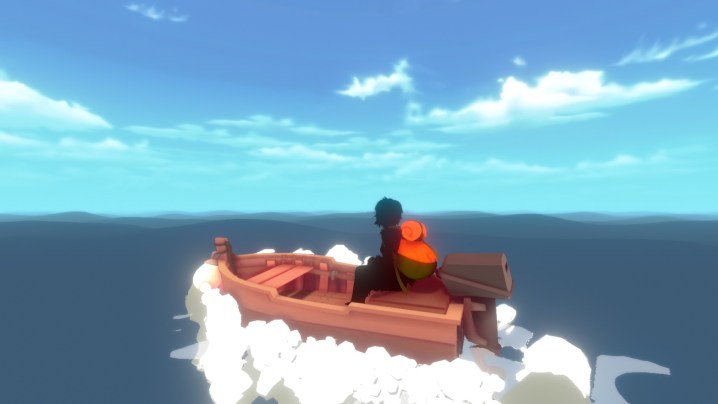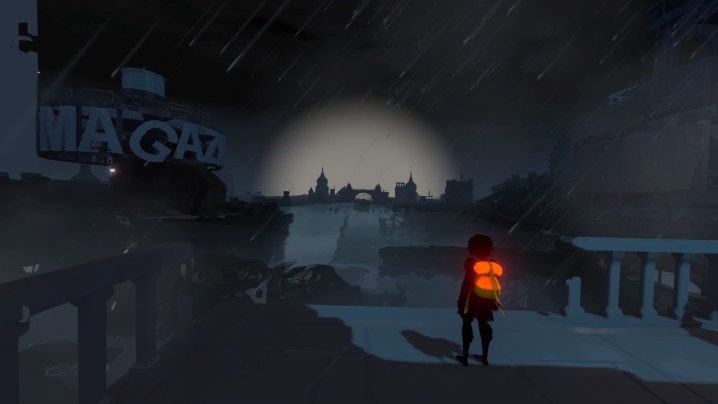
Halfway through Sea of Solitude I muted the voice volume and turned off the subtitles. Not because the writing or voice acting is bad, but because it says so much more through its environments and animations than it does with spoken words. It’s rather fitting since Sea of Solitude is an adventure game presented to players as a metaphor for what it’s like to struggle with mental illness and the overwhelming feelings of loneliness. Its striking visuals combined and the wordless ambiguity made the later scenes more powerful. Sea of Solitude is a harrowing, important experience no matter how you choose to play it, but it holds a story so universal that I found it doesn’t really need words to leave a lasting impression.
If you’re unfamiliar with Sea of Solitude, it’s the latest game in the EA Originals lineup — Electronic Arts’ imprint supporting independent developers. Developed by a 12-person team at Jo-Mei Games in Berlin, Germany, Sea of Solitude has been brewing in the mind of CEO Cornelia Geppert for six years. Though initially inspired by a tough breakup, Geppert told Digital Trends during an E3 2019 interview that the team tried to capture all of the manifestations of loneliness through the story of protagonist Kay and the people around her. In this respect, Sea of Solitude is an undeniable success.
Sea of Solitude takes place in and around a flooded city inspired by Berlin. Its direct focus is on Kay, a young woman who has turned into a monster after suffering from painstaking loneliness. Throughout Kay’s journey, you explore, both by boat and on foot, the events that led Kay to this critical time in her young life.
From a gameplay perspective, Sea of Solitude is largely comprised of breezy platforming sequences. If you’re looking for a game with deep gameplay mechanics, Sea of Solitude isn’t it. Kay makes use of a solitary flare that is used in select monster encounters and can help you find your way if you aren’t sure where to go next. Still, it’s fun to play even with minimalistic mechanics that ask you to observe more than interact.

The world is inhabited by numerous monsters, both big and small, all portrayed in a shadowy black hue. Some of the monsters resemble animals, like a terrifying sea creature that lurks below the stormy waters. Others, like Kay, are monstrous versions of humans. It’s difficult to discuss the monsters and their relation to the story without spoiling it, however, I will say that I was rarely surprised by them. That’s a good thing, though.
Wordless emotions
Despite being relayed as one grand metaphor for loneliness, Sea of Solitude doesn’t try to trick you. Sure, the gorgeous world is an illusion, a sometimes dream, sometimes nightmare that works to pull you away from reality long enough to show the world around you in a new light. But it works because it paints such a vivid picture of Sea of Solitude‘s themes.
That picture is so moving because of how beautiful Sea of Solitude uses its cartoon-like imagery. From the way calm crystal clear waters fade into darkness to the gameplay mechanics used during encounters, each piece of Sea of Solitude‘s metaphorical world comes together to evoke a cohesive and wide-ranging array of emotions.
The loving attention to detail is what convinced me to turn off the dialogue. During its most critical moments, dialogue from Kay and other monsters is persistent. You get the full picture of character backstories from the dialogue. There’s no denying that some story beats are lost when the dialogue is turned off. At least at first. A strange thing happened when I encountered a new monster. I was in the dark about the monster’s origins and identity, but his volatile actions told me the only critical details I needed to know.

Then I watched him interact with another monster, and almost immediately knew what was going on. Without the dialogue, I could focus solely on what was on screen, allowing me to soak up all of the little details and interpret what was unfolding through visual cues alone. Once the big reveal happened, all of the preceding events held more power.
As I had played through a similar sequence with the dialogue on earlier in the adventure, I was able to compare the two experiences. I had the full story in mind, fed to me word-by-word, earlier in the game. My comprehension of the latter sequence revolved solely around what I saw. It was clear that the entire visual encounter with the pair of monsters made me feel more.
After finishing Sea of Solitude without dialogue, I went back and played through the sections again — this time with words. I wanted to make sure I hadn’t missed anything that could sway my interpretation of what occurred. Other than some backstory about the characters I only knew from their appearances and actions, the overall message remained the same.
Going hand-in-hand with the visuals, the reasoning behind this preference is that Sea of Solitude isn’t exactly grounded in reality. Though modeled after a real city, the world is desolate and fantastical. It contains only the remnants of civilization — of Kay’s life. Dialogue between monsters frequently references specific events that took place in the real world, which momentarily pulled me out of the setting.

Maybe it’s ironic that I decided to play a game that chronicles loneliness by upping the lonesomeness. But Sea of Solitude‘s prowess comes from how it makes you feel, and it doesn’t need words to accomplish that. Is this the way Sea of Solitude was meant to be played? Obviously not. But it’s fascinating that Sea of Solitude‘s message remains, both with and without words.
Sea of Solitude is available now on PS4, Xbox One, and PC.


